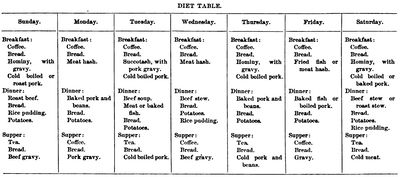Fort Brady (2)
|
Fort Brady (2) (1822-1893) - A U.S. Army post established in 1822 on the site of the earlier French Fort de Repentigny by Brigadier General Hugh Brady and five companies of the 2nd U.S. Infantry, in present day Sault Ste. Marie, Chippewa County, Michigan. Also known as Post at Sault Ste. Marie (1823), Post at St. Mary's (1823-1824), Cantonment Brady (1824-1825) and finally Fort Brady (1825-1944). Named for Brigadier General Hugh Brady. The original Fort Brady was abandoned in 1892-93 and a New Fort Brady was completed on another site in 1893. See the New Fort Brady. HistoryThis fort was sited on the south bank of the St. Marys River in northern Michigan. The St. Mary's river connects Lake Superior and Lake Huron and forms the border between the United States and Canada. The strategic location of this fort allowed it to monitor and control land and water access between the lakes and entry into the United States. This post was established in June 1822 by Major General Hugh Brady with companies A, B, D, I, and K of the 2nd U.S. Infantry. The post was built out as a rectangular stockade with blockhouses on opposing corners. The interior log buildings were constructed along three sides of the stockade. The site covers some 26 acres.  The Fort was garrisoned with regular troops up to the Mexican War (1846-1848). When the regular troops were withdrawn, the 1st Michigan Volunteers garrisoned the Fort during the war. Regular troops returned at the end of the war but not until mid 1849. The regular garrison withdrew to Fort Snelling in 1857 and the Fort was not regarrisoned by regular troops until 1866. Company D, 4th U.S. Infantry arrived at the post on 12 May 1866 followed shortly by Company B. The Fort had significantly deteriorated, the enclosure was filled with rubbish and most of the buildings were not habitable and had to be rebuilt and enlarged before winter. The 1870 plan shows the rebuilt fort. The rebuilding appear to have been poorly done and the 1870 assistant Surgeon's report condemns most of the buildings as unsatisfactory and the sanitary conditions as intolerable. As if the poor living conditions were not enough that first year, the garrison was unable to get crops in the ground to supply vegetables during the winter months and signs of scurvy appeared. A strict dietary table was adopted to alleviate the threat of scurvy. The command was forced to slaughter beef in mid-winter and freeze it for consumption until spring. The resulting beef was described as "dry, tough, tasteless and subjected to great loss of weight." In the following years subsistence stores were furnished from Chicago and post gardens supplemented those supplies. 
Adding to the limitations of the post was the widening of the river to support increasing traffic. The decision to move the post was made and a new site, on higher ground, was selected. Construction did not begin until 1883 and was not completed until 1893. The move to the new site was completed in 1894. The new site retained the Fort Brady name but was also known as New Fort Brady.
Current StatusSite 1 has a marker and replica stockade wall.
See Also: Sources:
Visited: 28 Aug 2013
| ||||||